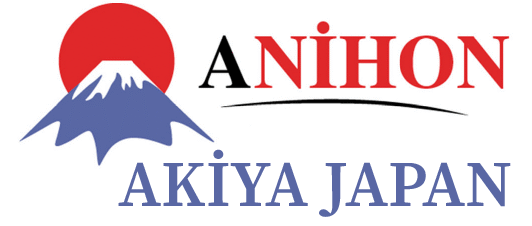Akiya (empty houses) have become a social problem throughout Japan. With the aging population and declining birthrate, the number of akiya is increasing every year, causing various issues such as safety and hygiene concerns and the deterioration of local scenery. On the other hand, more people are now considering buying these empty houses at a low price and renovating them to create their own unique homes. However, many of them face the reality that “renovation costs are higher than expected.”
This article will provide a detailed explanation of the costs involved in akiya renovation, as well as concrete suggestions on how to make these costs more affordable. We hope this will be a useful first step toward realizing your dream home.
The Reality of Akiya Renovation Costs: A Breakdown
The cost of renovating an empty house varies greatly depending on the age and condition of the property and the extent of the work. Let’s look at the general cost estimates.
1. Partial Renovation
This is for cases where only specific areas, such as the kitchen or bathroom, are renovated, not the entire house.
- Water facilities (kitchen, bathroom, toilet) renovation:
- Kitchen replacement: ¥500,000 – ¥1,500,000
- Bathroom replacement (unit bath): ¥600,000 – ¥1,500,000
- Toilet replacement: ¥200,000 – ¥500,000
- Tip: Renovating water facilities often involves plumbing work, which can lead to unexpected additional costs.
- Interior (wallpaper, flooring) renovation:
- Wallpaper replacement (one room): ¥50,000 – ¥150,000
- Flooring replacement: ¥100,000 – ¥300,000 (per room)
- Tip: In the case of empty houses, the underlying wall and floor materials are often damaged, so you must factor in the cost of base repair.
2. Full Renovation
This is a large-scale project that transforms the entire house, leaving only the structural framework.
- General cost: ¥5,000,000 – ¥15,000,000
- For older properties: If the house is old or has structural problems, costs can be even higher. When seismic reinforcement, termite extermination, or foundation repair is required, it’s not uncommon for costs to exceed ¥20,000,000.
Watch Out for “Hidden Costs”
In addition to the renovation fees, the following unexpected costs can arise:
- Demolition and waste disposal fees: Costs for removing old interiors and facilities.
- Asbestos removal fees: Older buildings may contain asbestos, and its removal requires specialized and costly work.
- Seismic reinforcement work: Reinforcing the structure to withstand earthquakes can be a significant cost, ranging from several hundred thousand to several million yen.
- Design fees: These are incurred when you hire an architect or designer.
- Other expenses: Remember to budget for fire insurance and real estate acquisition taxes after the purchase.
The condition of an empty house is more complex than a new or standard used home. Before starting any work, it is crucial to have a professional “inspection” (building condition survey) done to accurately assess the state of the building.
Concrete Suggestions to Reduce Renovation Costs
Although the costs of empty house renovation can be high, you can significantly reduce them with a few clever strategies.
1. Utilize Government and Local Subsidies/Grants
This is one of the most effective methods. Many local governments offer their own subsidy programs to encourage the use of empty houses.
- Eligible work: Seismic reinforcement, energy efficiency improvements, and renovations for households with children, etc.
- Application conditions: Conditions regarding the resident’s age, income, and the property’s location vary by municipality.
- How to search: Try searching with keywords like “akiya renovation subsidy [your municipality name].” If you are considering moving to a rural area, we recommend checking the local government’s website there.
2. Try a DIY (Do-It-Yourself) Approach
You can significantly cut costs by handling some of the interior work yourself, which can be expensive when hiring a professional.
- Suitable DIY tasks: Replacing wallpaper, painting, installing flooring, etc.
- Caution: Plumbing, electrical work, and structural work require specialized knowledge and licenses. For safety, you should clearly separate the tasks that must be left to a professional from those you can do yourself.
3. Prioritize and Renovate in Stages
Instead of trying to complete everything at once, start with the parts essential for living.
- Initial priorities:
- Safety: Work related to the building’s safety, such as seismic reinforcement, fixing leaks, and termite extermination.
- Basic functions: Water facilities like the kitchen, bathroom, and toilet, which are essential for daily life.
- Infrastructure: Plumbing and wiring for electricity, gas, and water.
By gradually renovating the cosmetic parts of the interior and exterior after you move in, when you have more budget and time, your financial planning will be much easier.
4. Get Multiple Quotes from Contractors
Get at least three quotes from different renovation companies.
- Benefit: Comparing the costs and proposals from multiple companies will help you understand the fair market price. Some contractors may also offer cost-saving suggestions.
- Caution: Don’t choose a contractor based on the lowest price alone. Carefully check the details of the work, the materials to be used, and the presence of any additional fees. Choosing a trustworthy contractor is the key to success.
5. Be Smart About Material Selection and Sourcing
You can keep costs down by choosing affordable, versatile materials instead of focusing on expensive brand-name products.
- Try looking for usable fittings and equipment at recycle shops or flea market sites.
- Use material stores that sell outlet products or discontinued items.
Empty House Renovation is an Investment in the “Future of the Community”
Renovating an empty house is not just a way to get a home at a low price. It is also a way to revitalize Japan’s local communities and create a unique lifestyle.
While financial concerns may be significant, by implementing the strategies mentioned in this article, you will surely find a way. Why not turn an empty house into a “treasure” with your own ingenuity and create a new life in Japan?

